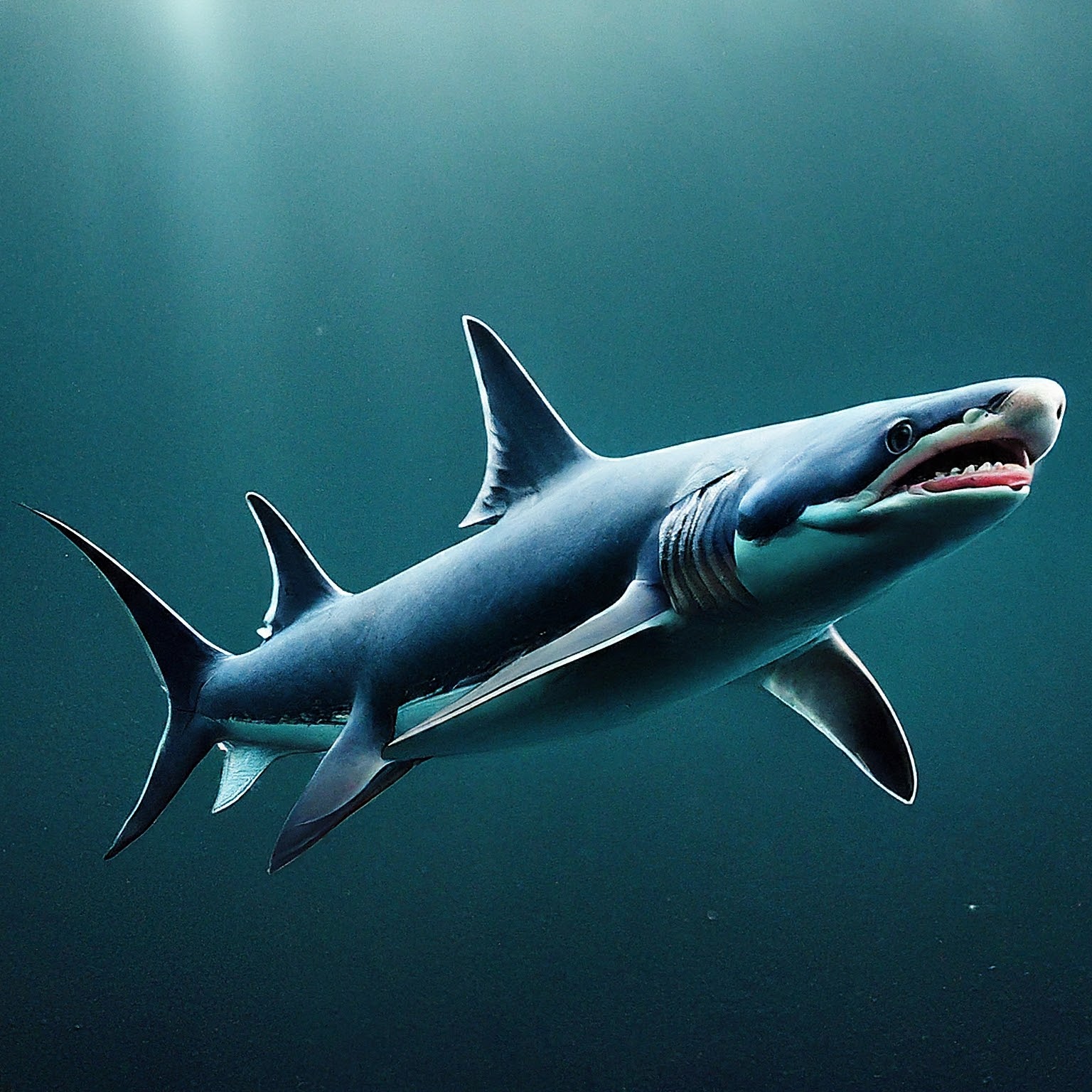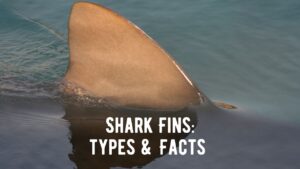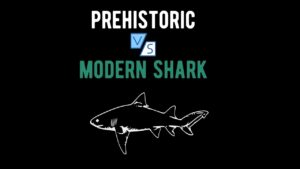
The Sharpnose Sevengill Shark, a fascinating inhabitant of coastal waters, invites exploration into its scientific classification, identification, physical characteristics, types, distribution, diet, reproductive traits, conservation status, intriguing facts, frequently asked questions, and a concluding reflection on the importance of preserving these enigmatic creatures in our oceans.
Sharpnose Sevengill Shark Scientific Classification
To commence our journey into the realm of the Sharpnose Sevengill Shark, we must first understand its scientific classification:
- Kingdom: Animalia
- Phylum: Chordata
- Class: Chondrichthyes
- Order: Hexanchiformes
- Family: Hexanchidae
- Genus: Notorynchus
- Species: Notorynchus ferox
Sharpnose Sevengill Shark Identification, Appearance, and Anatomy
Easily recognizable by its distinct features, the Sharpnose Sevengill Shark boasts:
- Sharp Snout: Characterized by a pointed snout, distinguishing it from other shark species.
- Seven Gill Slits: A hallmark of the Hexanchidae family, it exhibits seven gill slits instead of the more common five.
- Agile Body: Possessing an agile and streamlined body, it maneuvers effortlessly through coastal waters.
- Coloration: Typically displaying a dark hue, ranging from brown to gray, providing effective camouflage.
Sharpnose Sevengill Shark Physical Characteristics
The physical attributes of the Sharpnose Sevengill Shark contribute to its prowess in the coastal ecosystem:
- Size: Adult individuals can attain lengths of up to 5 feet, with females often larger than males.
- Weight: Weighing around 50 to 60 pounds on average, they exhibit a sturdy build.
- Teeth Structure: Sharpnose Sevengill Sharks possess sharp, serrated teeth designed for gripping and tearing prey.
Sharpnose Sevengill Shark Types and Varieties
The term “Sharpnose Sevengill Shark” primarily refers to the species Notorynchus ferox, and there are no recognized subspecies.
Sharpnose Sevengill Shark Weight, Height, Size, and Teeth
Understanding the dimensions and dental features of the Sharpnose Sevengill Shark provides insights into its ecological role:
- Weight Variation: Sharpnose Sevengill Sharks exhibit variations in weight, with individuals commonly weighing between 50 to 60 pounds.
- Length: Adult individuals generally reach lengths of 4 to 5 feet, showcasing their moderate size.
- Teeth Structure: Equipped with sharp and serrated teeth, they are well-adapted for capturing and consuming a diverse range of prey.
Sharpnose Sevengill Shark Distribution, Migrations, and Habitat
Exploring the geographical range and habitat preferences of Sharpnose Sevengill Sharks is crucial for understanding their behavior:
- Global Distribution: Sharpnose Sevengill Sharks are found in temperate and subtropical coastal waters globally.
- Coastal Habitat: Preferring coastal areas, they are often encountered in shallow bays, estuaries, and continental shelves.
- Migrations: Some populations exhibit seasonal migrations, moving to different regions in response to changes in water temperature and prey availability.
Sharpnose Sevengill Shark Food and Diet
The dietary habits of Sharpnose Sevengill Sharks play a pivotal role in coastal ecosystems:
- Versatile Predators: They are opportunistic predators, feeding on a variety of prey including fish, rays, and smaller sharks.
- Role in Ecosystems: By regulating the population of smaller marine species, Sharpnose Sevengill Sharks contribute to the overall health and balance of coastal ecosystems.
Sharpnose Sevengill Shark Reproduction and Lifespan
The reproductive biology and lifespan of Sharpnose Sevengill Sharks offer insights into their population dynamics:
- Viviparous Reproduction: Female Sharpnose Sevengill Sharks give birth to live young after an internal gestation period.
- Litter Size: Litters typically consist of 30 to 40 pups, with variations based on factors such as the size and age of the female.
- Lifespan: Sharpnose Sevengill Sharks have a lifespan estimated to be around 20 years, influenced by factors such as size and environmental conditions.
Sharpnose Sevengill Shark Conservation, Efforts, and Threats
As coastal ecosystems face threats, understanding the conservation status and efforts for Sharpnose Sevengill Sharks is imperative:
- Conservation Status: Currently, Sharpnose Sevengill Sharks are not assessed individually on the International Union for Conservation of Nature (IUCN) Red List.
- Potential Threats: Overfishing, habitat degradation, and bycatch pose potential threats to Sharpnose Sevengill Shark populations.
- Research Needs: More research is required to assess their abundance, distribution, and specific threats to formulate effective conservation measures.
Sharpnose Sevengill Shark Predators and Preys
Despite their role as predators, Sharpnose Sevengill Sharks face potential threats from larger predators and human activities:
- Predators: Larger sharks, such as great whites and tiger sharks, may prey on Sharpnose Sevengill Sharks, especially smaller individuals.
- Human Activities: Overfishing and habitat destruction, driven by coastal development and pollution, pose indirect threats to Sharpnose Sevengill Shark populations.
Sharpnose Sevengill Shark Facts
- Camouflaging Coloration: The dark coloration of Sharpnose Sevengill Sharks serves as effective camouflage in the coastal environment.
- Preferential Nocturnal Feeding: They exhibit a preference for nocturnal feeding, actively hunting during the night when many prey species are more active.
- Distinctive Reproductive Features: The viviparous reproductive strategy, with live birth, is a distinctive feature of Sharpnose Sevengill Sharks.
Sharpnose Sevengill Shark Related FAQ’s
- Are They Dangerous to Humans?
- Sharpnose Sevengill Sharks are generally not considered a threat to humans. While they may defend themselves if provoked, they are not aggressive.
- Why Do They Have Sharp Noses?
- The sharp snout of Sharpnose Sevengill Sharks is an adaptation for efficient hunting and capturing prey in coastal environments.
- How Deep Do They Dive?
- They are commonly found in shallow coastal waters but can venture into deeper areas depending on factors such as prey availability.
- Do They Exhibit Social Behavior?
- Sharpnose Sevengill Sharks are often solitary, but certain behaviors, such as mating and feeding, may bring them together temporarily.
Conclusion
In conclusion, the Sharpnose Sevengill Shark emerges as a captivating species navigating the coastal mysteries with adaptability and resilience. As we unravel more about these enigmatic creatures, the importance of their role in maintaining the balance of coastal ecosystems becomes evident. Conservation efforts, scientific research.






